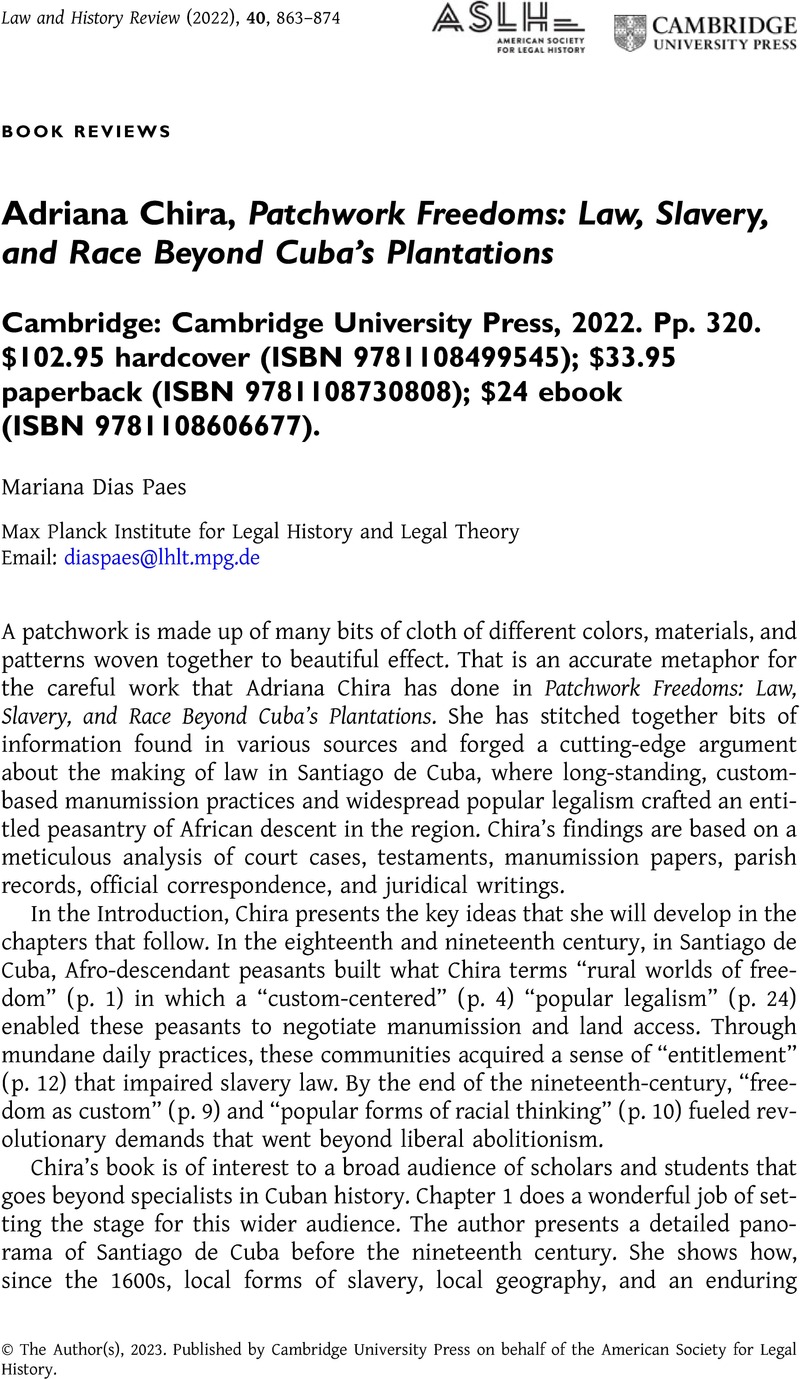No CrossRef data available.
Article contents
Adriana Chira, Patchwork Freedoms: Law, Slavery, and Race Beyond Cuba's Plantations Cambridge: Cambridge University Press, 2022. Pp. 320. $102.95 hardcover (ISBN 9781108499545); $33.95 paperback (ISBN 9781108730808); $24 ebook (ISBN 9781108606677).
Review products
Adriana Chira, Patchwork Freedoms: Law, Slavery, and Race Beyond Cuba's Plantations Cambridge: Cambridge University Press, 2022. Pp. 320. $102.95 hardcover (ISBN 9781108499545); $33.95 paperback (ISBN 9781108730808); $24 ebook (ISBN 9781108606677).
Published online by Cambridge University Press: 13 January 2023
Abstract
An abstract is not available for this content so a preview has been provided. Please use the Get access link above for information on how to access this content.

- Type
- Book Review
- Information
- Copyright
- Copyright © The Author(s), 2023. Published by Cambridge University Press on behalf of the American Society for Legal History.


